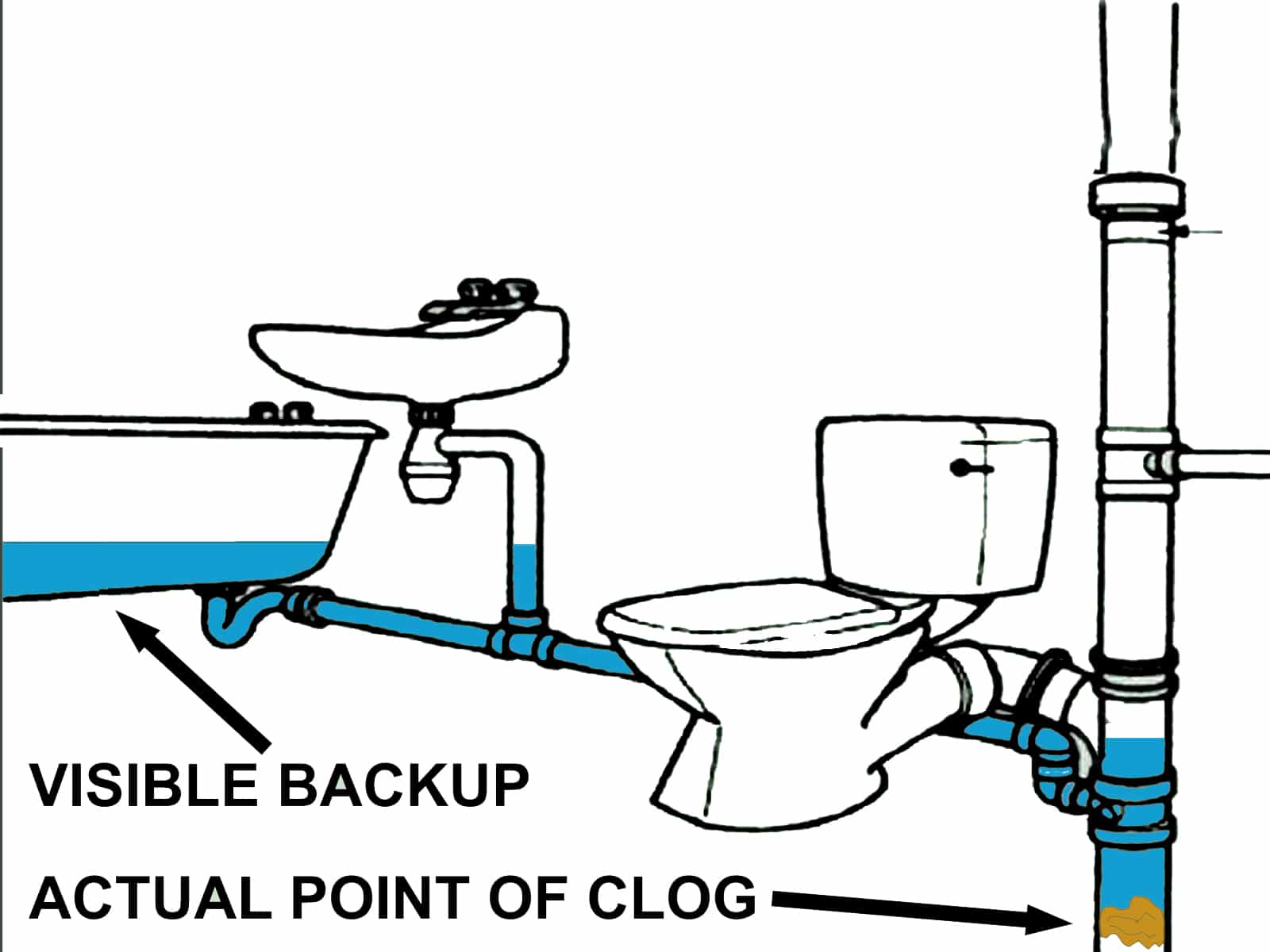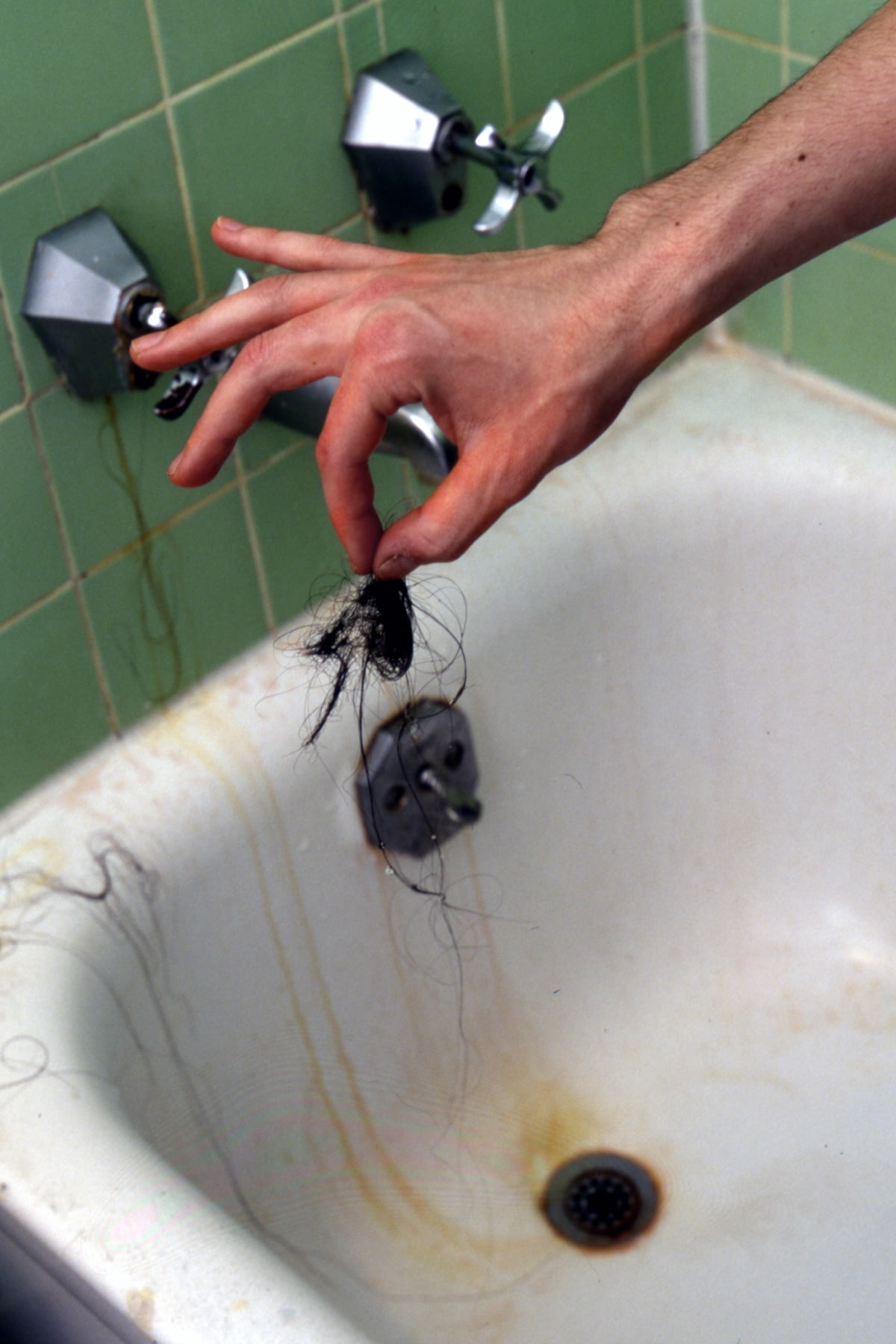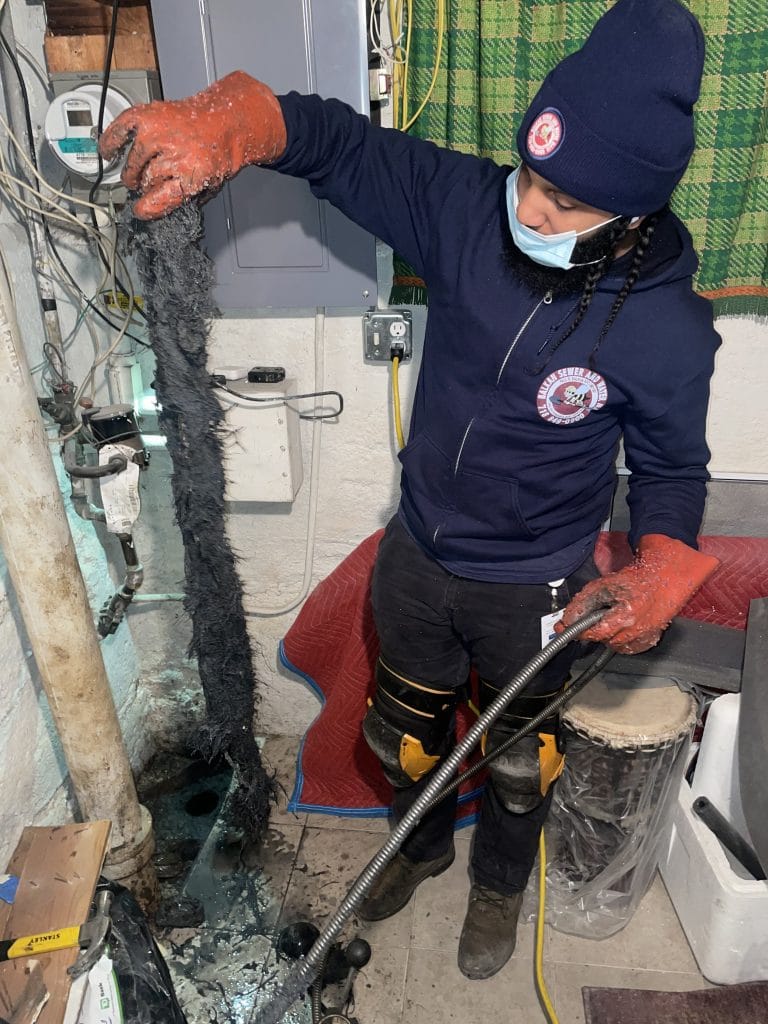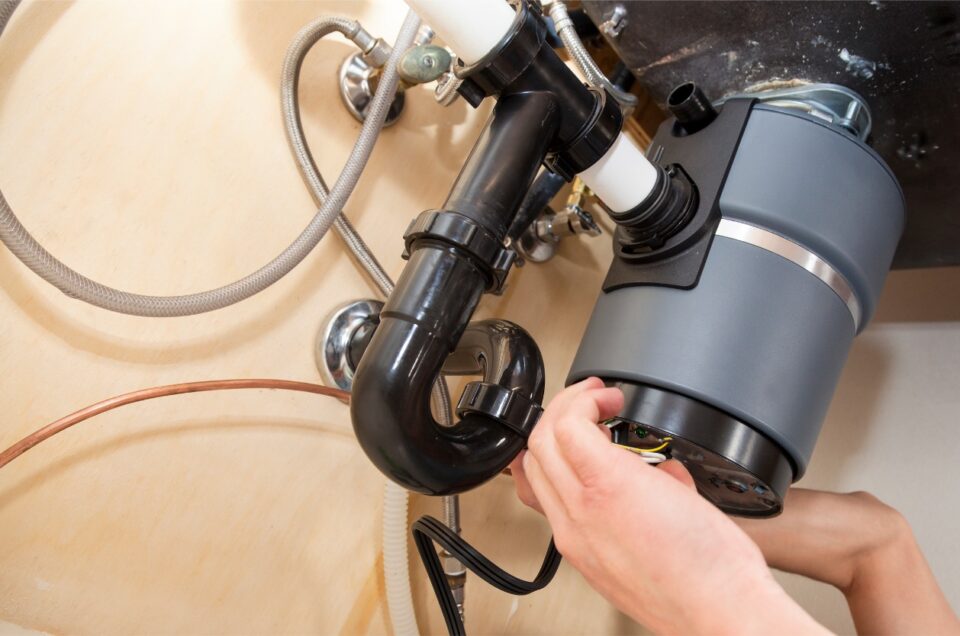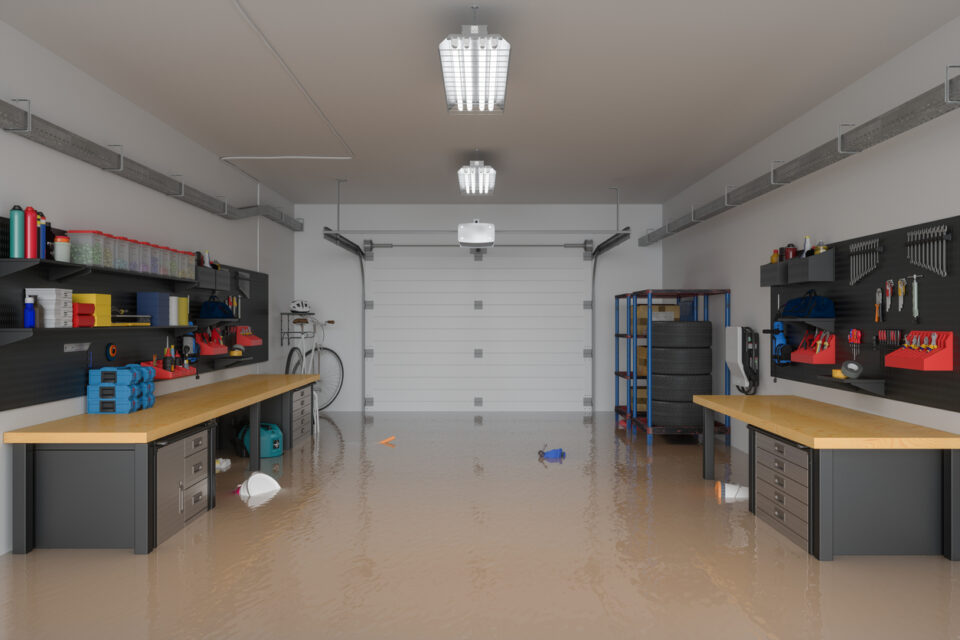Many a clogged bath tub drain is preventable. But before we get to clog prevention, let’s understand the plumbing itself. Every bath tub is connected to its own drain pipe. Similar to other plumbing fixtures, a bath tub is not invulnerable to clogging. Between the drain pipe and the actual tub, there is usually (but not always) a p-trap to prevent sewage gas from entering the house. A P-trap contains a small amount of water to create an impenetrable seal through which there can be no exchange between the gas inside the pipe and air inside the building. The P-trap also helps to catch any unsuitable or large objects before they enter the drain system.
When you pull on, or flip up, the tub drain stopper, water should flow down the drain pipe quickly without problems. In some cases, the water cannot drain fast enough. This is due to either due to a faulty tub drain cover, or a partial or full clog in the pipe. If the problem persists after you replace tub drain cover, chances are something in the pipe is obstructing the flow of water.
[wc_box color=”info” text_align=”left”]
The base of a bath tub (where the bath tub drain is located) is usually at a lower position than a toilet or sink, so when a main drain line is clogged (completely or partially) large volumes of wastewater from a sink and a toilet can flow back up into bath tub. The actual clog itself may exist in a much deeper location in the plumbing system, and can lead to serious damage. The point is that when water backs up from a bath tub, it does not necessarily mean the clog is in the bath tub drain line itself.
[/wc_box]
Some causes of a clogged bath tub drain
A clogged bath tub is not uncommon, and it can happen for various reasons. Some of which are as follow.
The main function of a tub drain cover is to open and close the drainage opening in the bath tub itself. Underneath the cover, there should be a strainer to catch hair or any physical objects before they enter the P-trap, and end up in the drain pipe. Without regular removal for cleaning, the strainer will eventually fail to perform proper filtration. Accumulation of hair in the pipe can block the flow of water. It may seem a nuisance, and a little nasty, but cleaning a bath tub drain is a vital part of preventing a clog.
-
Soap Scum
It may appear that soap scum easily dissolves in water. In reality, this soap residue only flows with water into the pipe itself. As long as the water is flowing properly inside the drain pipe, there shouldn’t be any clogging problem. Soap scum, however, can solidify and accumulate on the inside surface of the drain pipe. Over time the accumulation becomes both larger and harder, eventually causing a persistent and hard to clear obstruction.
-
Hard Water
The main problem with hard water is that it contains a myriad of microscopic impurities. Many of these impurities are solid material which can accumulate on drain pipes as well. A clogging issue caused by hard water deposits does not happen overnight; it takes weeks or even months before you notice slow drainage. Fortunately for New Yorkers, our water supply system does not contain hard water. Previously those serviced by well water, such as provided by the now defunct Jamaica Water Supply, had hard water.
Clogged bath tub drain prevention
A clogged bath tub is not actually a very difficult problem to solve. But it is better to do some preventive measures before the actual issue arises. While it is impossible to prevent every possible drain clog, at least you can try the following methods to avoid potential clogging in the future.
-
Install a hair catcher
As mentioned earlier, this is a mesh strainer designed to filter out hair and other small objects. Your tub cover will still function properly even with a hair strainer installed. Regardless of model and design, a hair catcher will not clean itself, so you must regularly remove the strainer and clean it from all residue attached to it, including hair. Always test the drain fixtures after every cleaning. If there is a malfunction, you do not want to make that discovery with a bath tub full of water!
-
Do not throw any physical objects into tub drain
Besides soap, there can be a lot of different things that clog the bath tub drain. For example small toys, dental floss, nail polish, or its remover, cigarette butts, cotton balls, paper products, and more. Some of them can flow easily through the hair catcher but solidify once they enter the drain pipe.
-
Use a water softener
Regular tap water still contains impurities. One of the best methods to prevent them from entering your house is by installing water softener. You can attach this to a faucet or shower without obstructing the flow of water from the supply line. The most common model uses ion exchange technology, but there are also other varieties for everyone.
Please keep in mind that plumbing systems in every house are similar to a tree with multiple interconnected branches. An elaborate network of pipes contain wastewater from multiple fixtures. All these pipes will eventually lead to the main drain line that takes wastewater out of your property to a wastewater treatment system.
How to Clear a Clogged Bath Tub Drain
Slow drainage or a wastewater backup almost always starts with clogging, unless you have a broken pipe. Clogs localized to a single fixture are fairly easy to clean, but water backup in the bath tub is a problem best left to professionals. Plumbers have special equipment to access the main drain, pinpoint the exact position of the obstruction, analyze the pipe condition, see what the obstruction is, and determine best the cleaning methods. They use a drain auger, hydro-jet, or chemical cleaners depending on the conditions.
[wc_box color=”info” text_align=”left”]
A novice attempting to clear a clogged bath tub can damage the drain lines, or damage the bath tub fixture itself. Surely the cost of repairing a drain line, or bath tub fixture far exceeds the cost of calling a professional in the first place. For instance, if the trap under the tub is punctured, water can unknowingly leak out for an extended period of time. This type of leak can damage floors, or a ceiling for a lower floor of your house.
[/wc_box]
- A drain auger, or plumber’s snake, is a coiled spiral cord with a handle to push a hard obstruction down the drain line. It accomplished the same thing as that a plunger does, but by using a different method.
- A hydro-jet is heavy-duty equipment which forces high-pressure water to enter the drain line. A hydro-jet clears all obstructions in its way. It implements the same principal as a power washer, but uses a different sets of nozzles. A hydro-jet is virtually never used to clear a clogged bath tub drain.
- Commercial-grade chemical cleaners for plumbing purposes are only available for professionals. These chemicals must be handled with extra care to prevent additional damage to the pipe, or the the person applying the chemical itself.
If necessary, professional plumbers can utilize a sewer camera to see the condition of the pipe, and check for other damage in the drain installation. this can pinpoint the problem, and avoid unnecessary damage to finished areas such as tiles, plumbing fixtures, floors, and walls.
Problems with Soap Scum
By definition, soap contains a combination of animal fats, plant oils, and lye. This essentially a strong solution of sodium or potassium hydroxide. When used in combination with hard water, soap creates a by-product that we know as soap scum. This is an insoluble white solid water formed when magnesium and dissolved calcium react with fats and oil. On the other hand, detergents are made of synthetic substances as alternatives to natural oil and fats. Detergents still produce scum, but at a much lesser extent. To minimize clogged a bath tub issue, you can use detergents instead of soap. Read the ingredients printed on the products’ packaging to tell the difference. When the situation does call for professional advice, or a visit to your home, contact the Balkan Drain Team.

